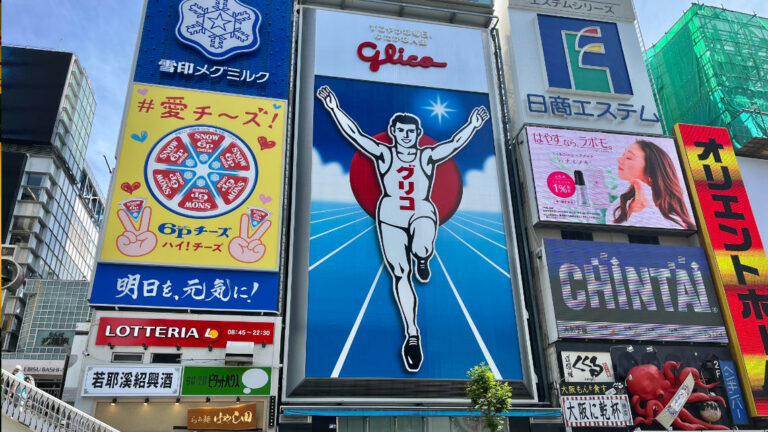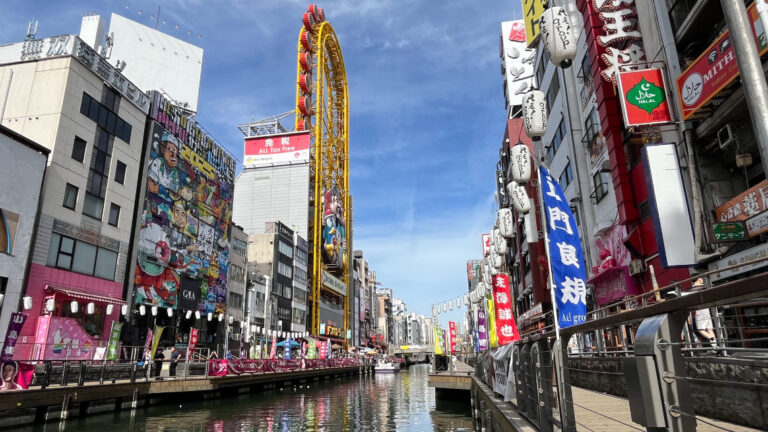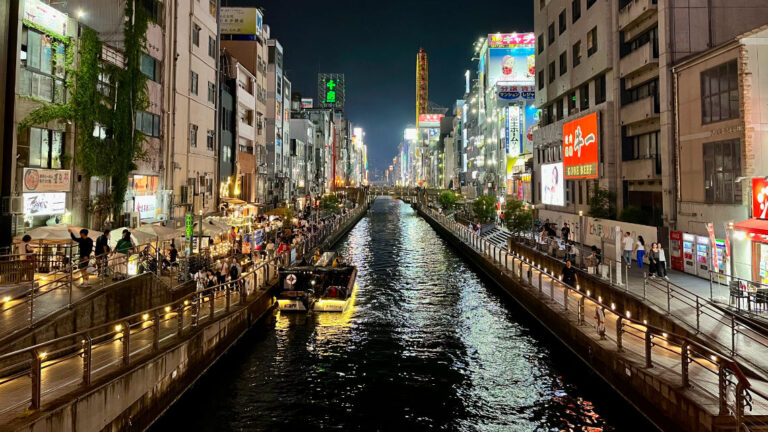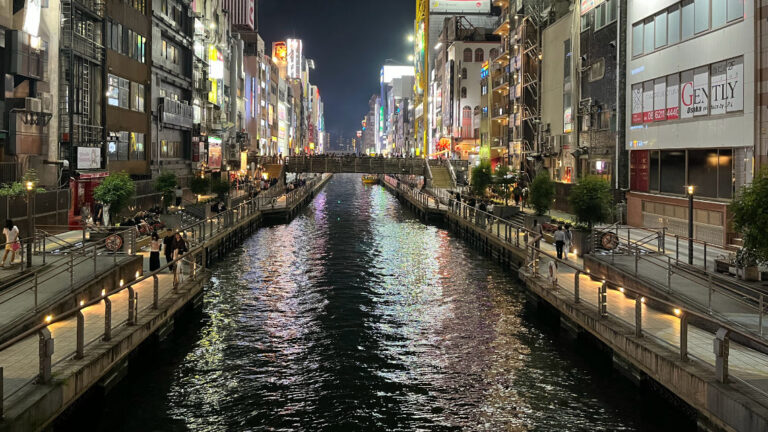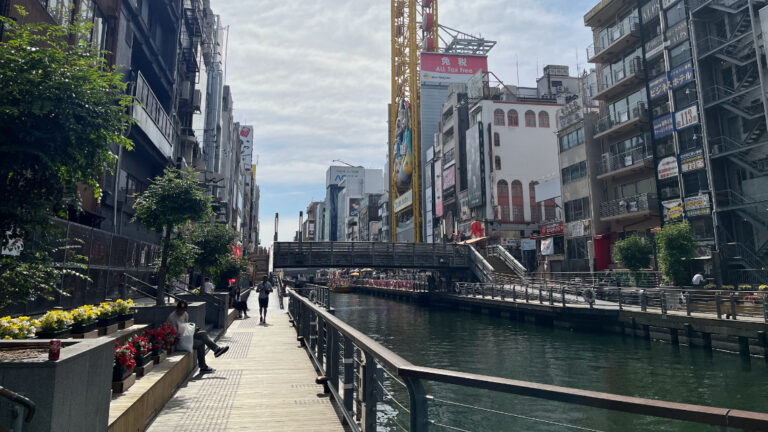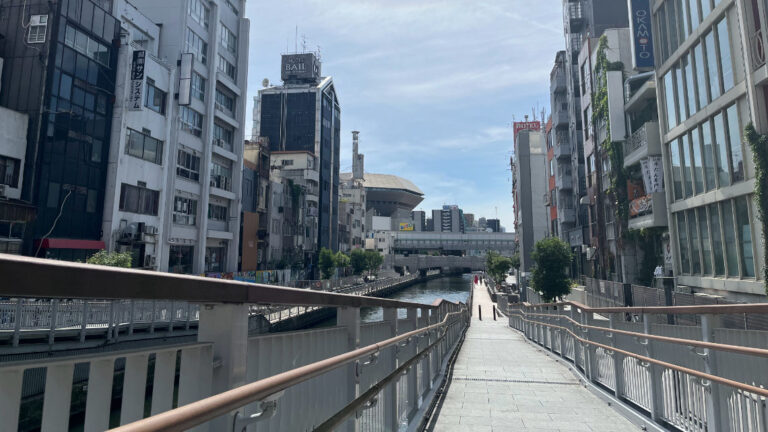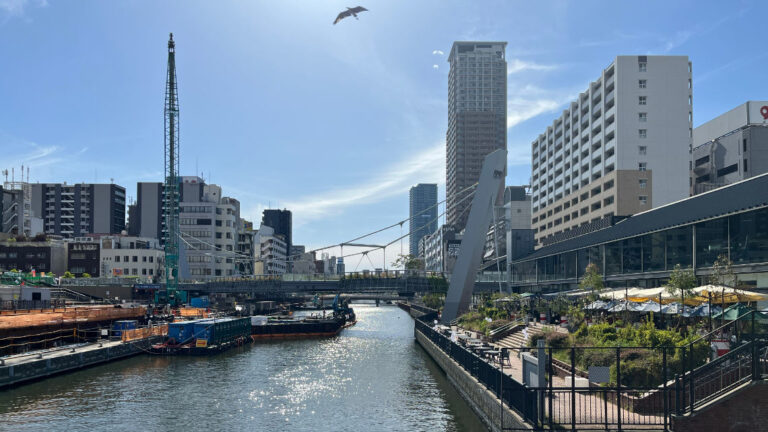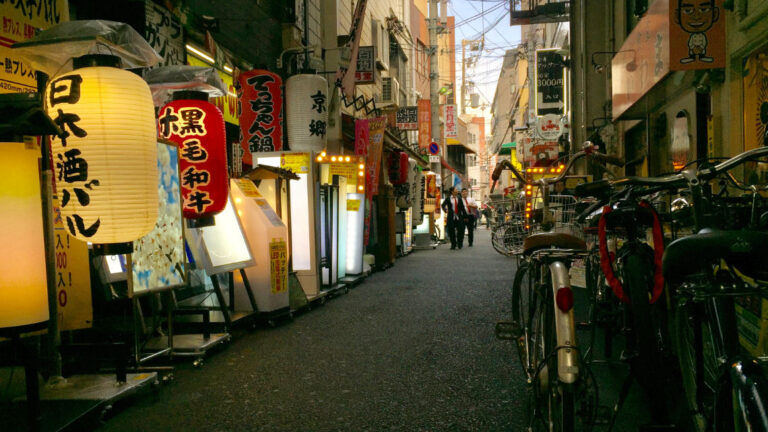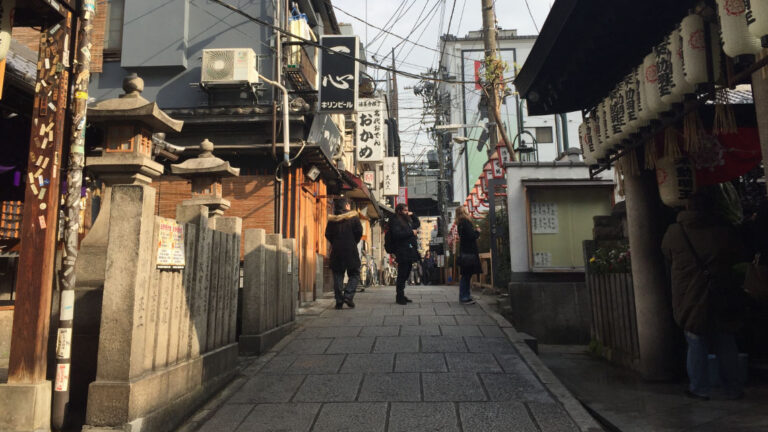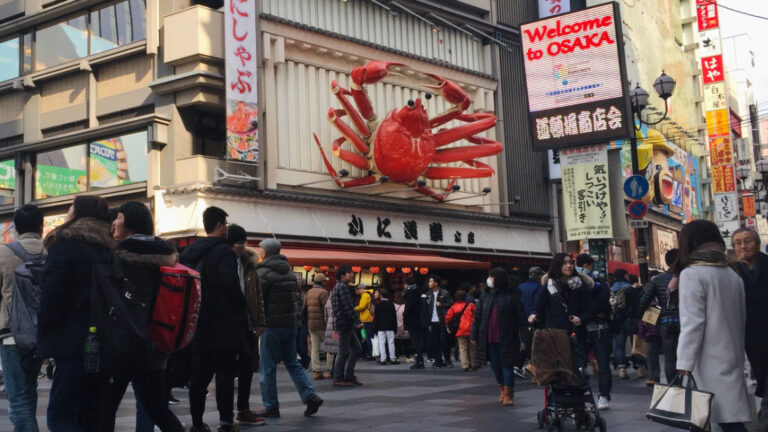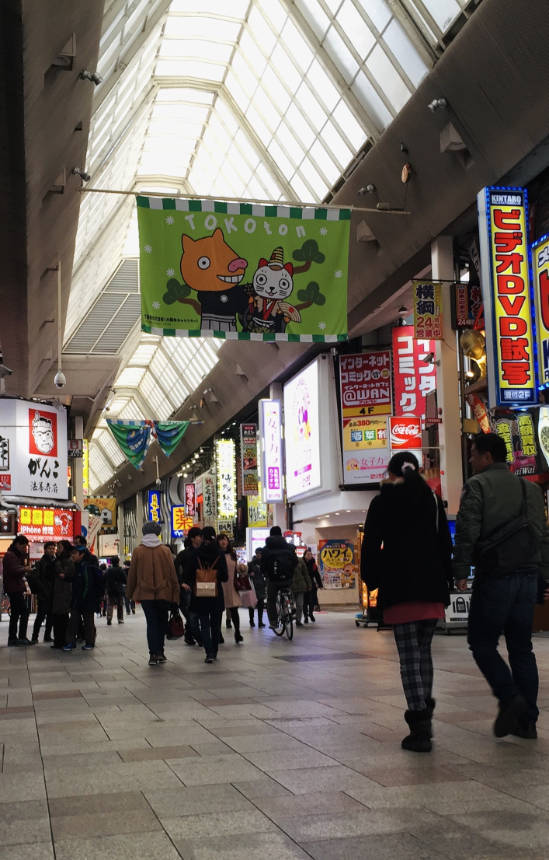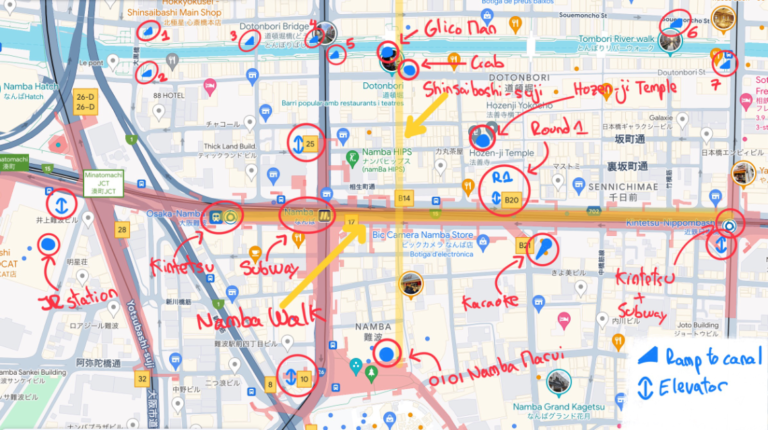Dotonbori, at the heart of Osaka, embodies all the major traits of the city, which make it unique to Japan. Featuring both futuristic and decaying vibes, old and new blends in a mix of bright neon lights, bustling pedestrian alleys with hundreds of street-food stalls and restaurants to grab a bite and a river promenade that is a feast for the eyes.
General information
Since the Edo period on the 18th century, Dotonbori has been an entertainment district. Currently, it is a popular spot for tourists to experience the essence of Osaka, but also a go to place for locals to have fun with friends in the evening and on nights during the weekend.
Dotonbori is named after the river that crosses from East to West the Northern of Namba, one of Osaka’s city centers along with Umeda. The star of the area is the promenade that goes beside both river banks and the many bridges that cross it. It is lively all day long and features many restaurants and izakaya to taste Osaka’s specialties (takoyaki, kushikatsu, ramen, crab, okonomiyaki, etc.), as well as landmarks like the Glico Man, a neon-light sign next to Ebisubashi bridge, or the Moving Crab, on the pedestrian street parallel to the promenade.
Aside from taking a stroll and crossing all bridges, popular activities to enjoy the views from all angles (when it gets darker the district comes alight with hundreds of neon lights and paper lanterns) are the river boats and the Don Quijote ferris wheel.
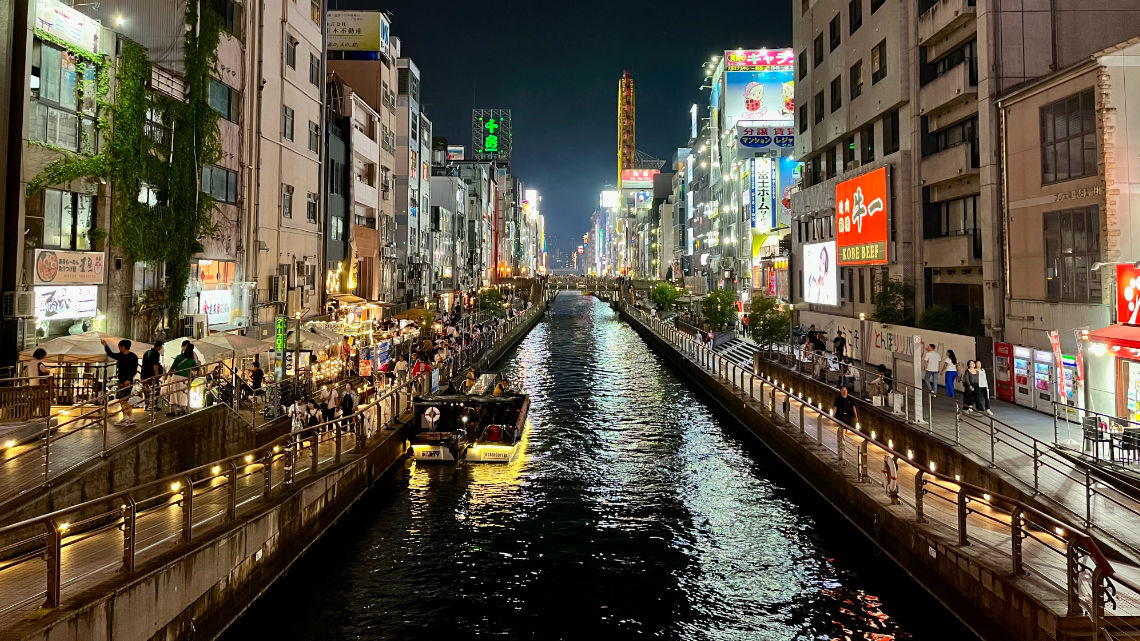
As an entertainment area, besides the canal, there are plenty of things to do. Dotonbori is also a popular shopping district. It is crossed from North to South by Shinsaibashi-suji a roofed-street gallery that stretches two kilometers North from Namba. It is lined with restaurants and food stalls, like the popular 551, famous for its nikuman (meat buns), gaming parlors where you can try both vintage and newer arcade games, flagship stores and karaoke centers, just look for the myriad of カラオケ (karaoke in Japanese) signs with blue or white background and red lettering, where you can book a private room and sing your hearts out.
It is also place to Namba Walk, a shopping mall in the form of an underground walkway that connects the stations of Namba and Nippombashi. A great way of spending hotter summer days or colder winter ones, from Uniqlo or Studio Ghibli official stores, to fast food chains or higher end restaurants, at Namba Walk there is something for everyone.
Finally, at Hozen-ji Yokocho, an alley that has preserved the atmosphere of old-Osaka branching from the main pedestrian streets, there is Hozen-ji Buddhist temple. Its statue covered in green moss survived the bombings during the Second World War and it is said that if you pour water onto it and ask for a wish it may come true.
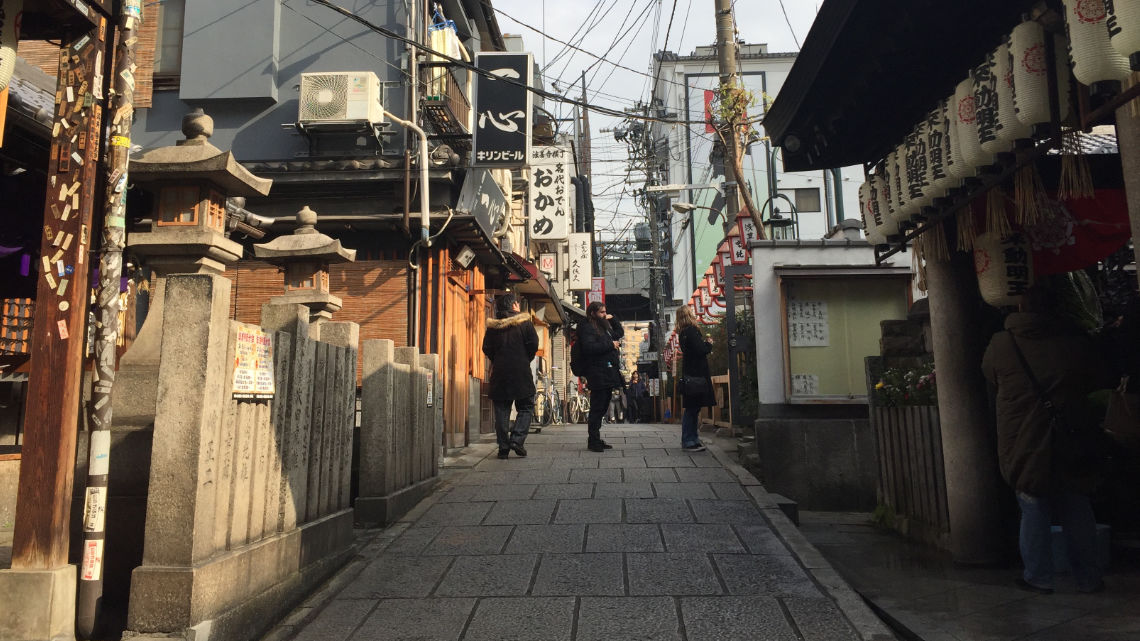
Getting there
As Namba station is one of the major transportation hubs in Osaka, it is quite easy to get to Dotonbori from nearly anywhere in the city. You can use the following subway lines and get off at Namba station (Midosuji red line, Yotsubashi blue line or Sennichimae pink line) or the Kintetsu train line. Exits 10 and 25 have elevators and are wheelchair accessible. Number 25 is closer to the Dotonbori canal.
You can also use the subway (Sennichimae pink line or Sakaisuji brown line) or the Kintetsu line and get off at Nippombashi station. Exit number 5 is wheelchair accessible.
Finally, although the stations are a bit further away from Dotonbori canal, you can also reach the area by train while getting off at either JR Namba station (exit 30 is accessible) or at Nankai Namba station (the Northern ticket exit is accessible), both served by JR trains or Nankai line trains respectively.
Accessibility
Overall, the accessibility to move around Dotonbori is quite good. If you do not know your way, you might have to do some detours, especially to go up and down the lower boardwalk promenade beside the canal. All in all, it is around 800 meters and it has 7 access ramps, 4 in the Northern side and 3 in the Southern (6 of them next to the bridges and 1 directly from the northernmost parallel street. You can check the map below to see all access points.
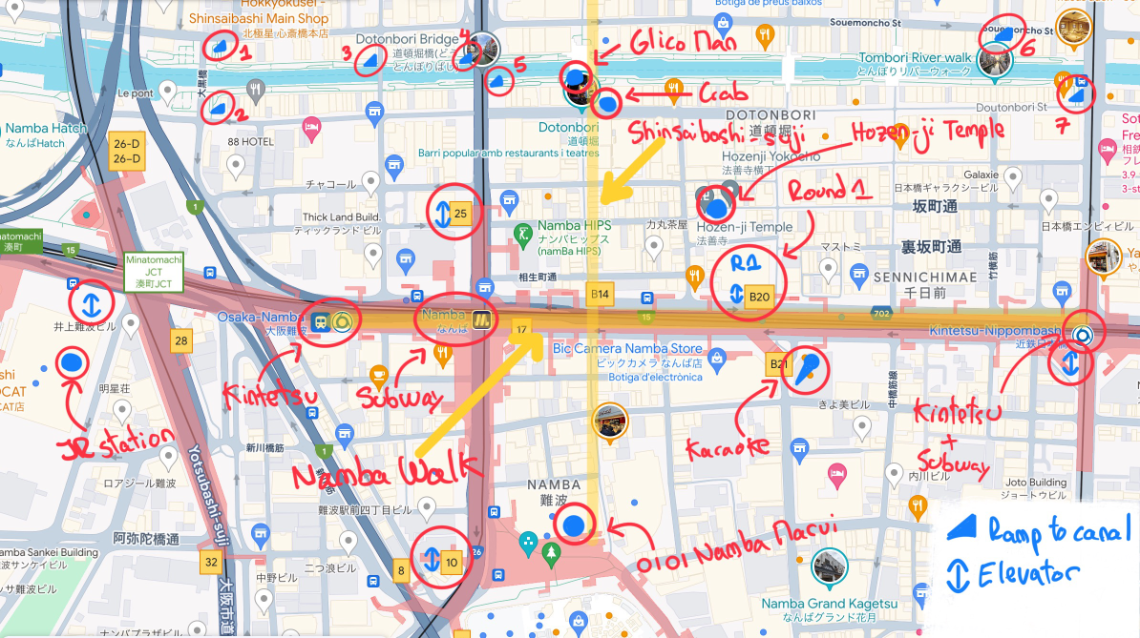
All the ramps are smoothly paved and have a mild incline. Actually, the lower promenade has also two levels, but there are plenty of ramps connecting them, so no map is required. All along the promenade there are plenty of benches. There are also many restaurants with outdoor seating and tables, so it is easy to find places to rest.
The lower boardwalk promenade, except for the area in front of Glico Man, is way calmer than the bridges and the parallel pedestrian streets that can get really crowded. If you want to avoid the crowds, it is recommended to enter the promenade from the Western ramps (1, 2 or 3 on the map).
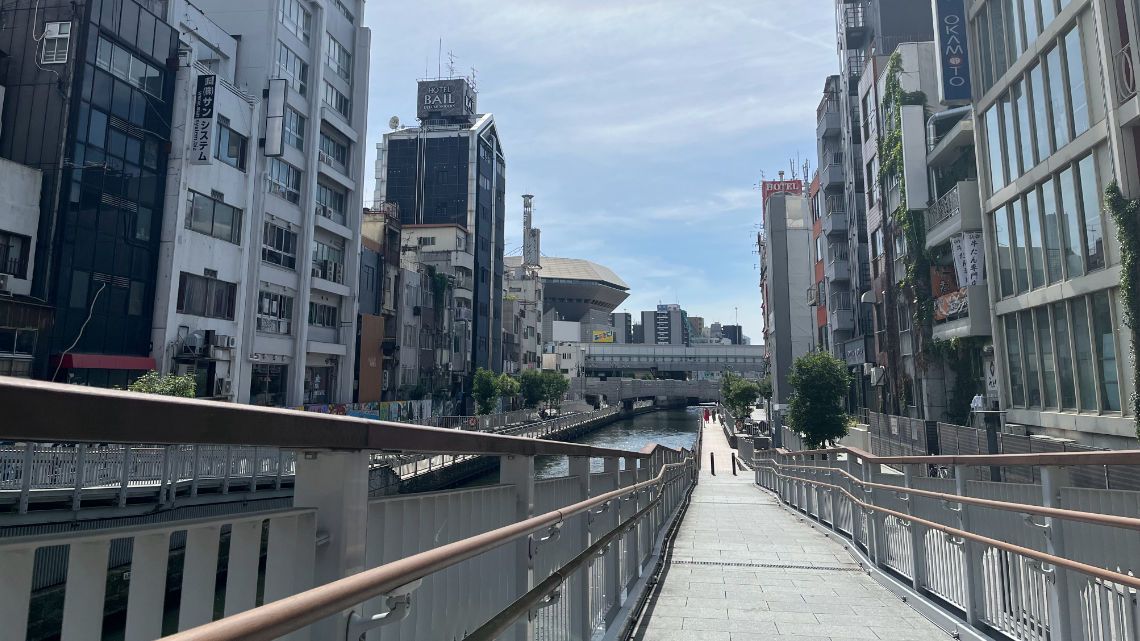
It is important to note that Aiaubashi bridge has poles at the entrance to avoid vehicles crossing. To the side there is a wider curved path to pass. However, it may be too narrow for some wheelchairs. The rest of the bridges are fine, although Tazaemon bridge has poles to get near the veranda. The best view for wheelchair users, besides the lower promenade, which is mostly recommended, is from either Nippombashi bridge or Aiaubashi bridge (poles permit). The veranda at Ebisubashi bridge is tall and made of concrete. Nevertheless, as all the tour around the canal is less than 2 kilometers, if you have the time, you may try them all.
On the parallel streets to the canal, as well as on Shinsaibashi-suji gallery street, all of them pedestrian, there are plenty of restaurants. Some of them may not be accessible due to steps at the entrance or due to narrow aisles, but there are so many options that it is easy to find accessible ones. The terraces on the promenade and all the restaurants on Namba Walk are also a good option.
Another tricky part may be finding the elevators. On the “Getting there” section, and on the map, you can find which are the subway exits with elevators. These same elevators can be used to access Namba Walk. To access Namba Walk at the mid-section, there is an elevator inside Round 1 building that gets to it. It is near exit B20.
Regarding activities in the area, unfortunately neither the Don Quijote ferris wheel nor the canal boats are wheelchair accessible. You can get next to the boarding points of the boats via ramps on the promenade, but once there there are steps to board and no space for wheelchairs. Neither wheelchairs nor strollers are allowed on board.
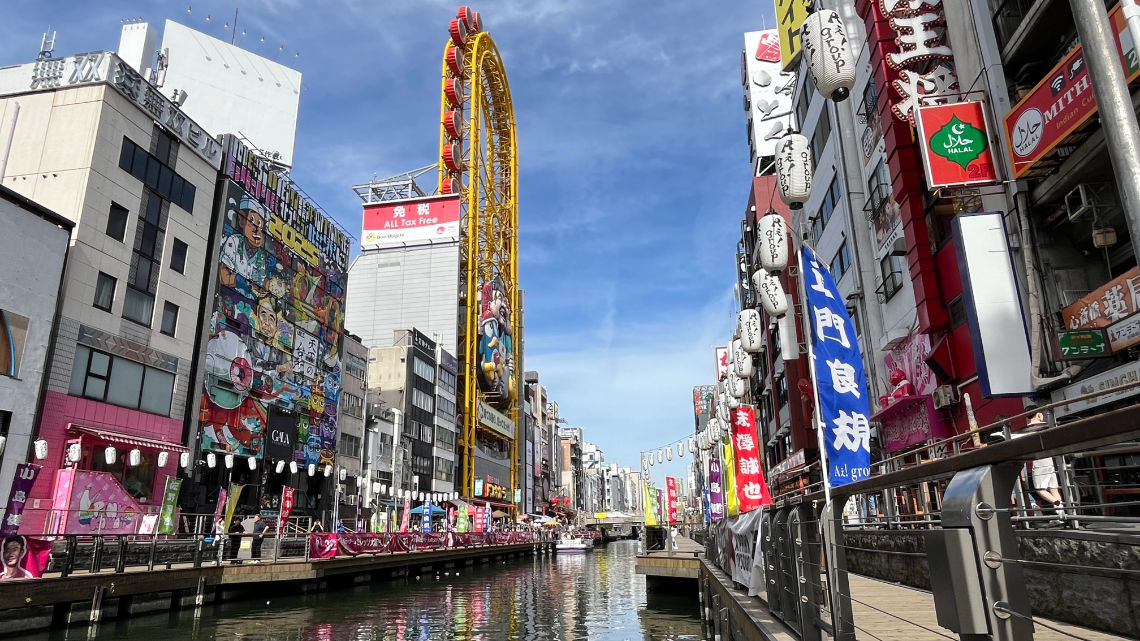
On the other hand, there are several accessible karaoke venues and game parlors in the area. For instance, Round 1 game parlor has an elevator to access all its levels. The karaoke on the 3rd floor of AMZA building is also wheelchair accessible. Both of them are marked on the map.
As for accessible restrooms, all stations mentioned at the “Getting there” section have wheelchair accessible restrooms, most of them with changing tables and ostomate equipment. You can also find an accessible restroom near exit B21 in Namba Walk, as well as in many of the buildings and shopping malls nearby (O1O1 Namba Marui, Round 1, etc.).



